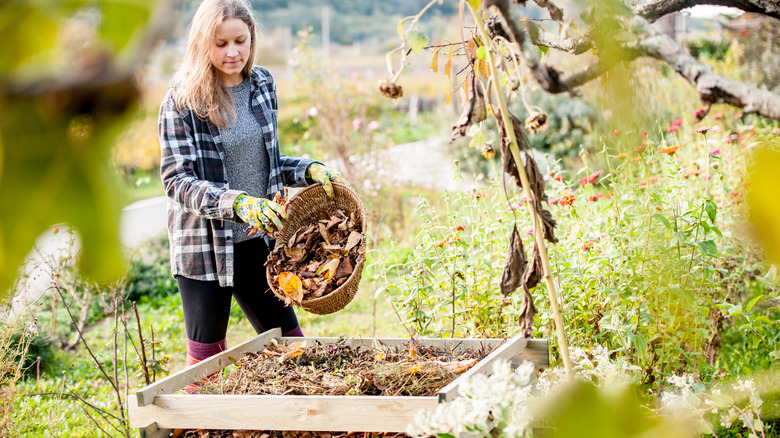How To Treat Your Garden In October
October is something of a sweet spot in the gardening calendar. At this point, plants are not wrestling with the heat or scrambling to conserve moisture; instead, they're zeroing in on developing their roots. This shift in biological focus gives you a golden opportunity to make strategic moves in your garden. You can confidently plant and transplant trees, divide overgrown perennials, tackle weed issues, plant bulbs, and even kick off your mulching routine. Think of it as a kind of gardening grace period, where the chances of your efforts thriving are significantly higher than at other times of the year.
And let's not forget the impending winter rains. These seasonal showers act like an automated irrigation system from Mother Nature herself, encouraging your plants to develop even stronger roots. A robust root system is your plants' best defense against diseases and periods of water stress— two major concerns that can severely compromise the health of your garden. In this light, having a well-thought-out game plan for fall gardening isn't just a good idea; it's a strategy for maximizing your garden's potential for the upcoming seasons.
Planting trees and shrubs, transplanting, and dividing perennials
First up on your agenda should be planting trees and shrubs. Given their need for deep root systems, these plants thrive when planted in the fall. The natural cycle at this time of year allows them to establish themselves well before the challenges of the hot summer months kick in. For October tree planting, dig a hole that's just a bit wider than the plant's root ball. Place the tree in the hole, ensuring it sits at the same level as in its original container. After that, apply mulch and give it a good watering. Bulb planting also sets the stage for a colorful spring, and this is your go-to month. The location you choose should have well-draining soil, and you'll want to plant the bulbs at a depth three times their size for optimal growth. If you're wondering what types of bulbs to plant, tulips, daffodils, and hyacinths are solid choices for a lively, colorful garden come springtime.
Once you've tackled the big tasks of planting, turn your attention to transplanting — another job that's well-suited for October. If you've been putting off relocating some of your green friends because of the risk of transplant shock, now's the time to take action. Also, if you have any vulnerable perennials or other delicate plants, it's also a good idea to move them indoors or to a sheltered area outside during October. Doing so minimizes the risk of frost damage, enabling you to enjoy their beauty for another year.
Weed management, planting bulbs, and mulching
Managing weeds in October is also a wise move. Weeds are more than just an eyesore; they compete fiercely with your plants for essential nutrients, water, and growing space. Eliminating weeds now will give your garden a leg up in the long-term health department. Depending on how serious your weed problem is, you have options. You could go for mechanical removal using garden tools or opt for targeted herbicide applications. Either way, if you're using chemicals, make sure to read the labels carefully and adhere to all safety guidelines.
With the weeds under control, shift your focus to perennials. October is also an excellent time for dividing several types of perennials. As they grow, plants like peonies and daylilies can become overcrowded, which often leads to a decline in health and blooming. To divide these plants, dig up the entire clump of the plant you want to divide and then gently separate it into smaller segments. Ensure each new division has at least one strong shoot and a robust root system. After that, you're good to replant them. Finally, let's not forget about mulching, the icing on the cake of your October gardening tasks. A generous layer of mulch—aim for 4 to 6 inches—serves as a protective shield for young or vulnerable plants, guarding them against the freeze-thaw cycles that winter can bring. Opt for organic materials like shredded leaves, bark, or straw and spread it over the plant crowns.


